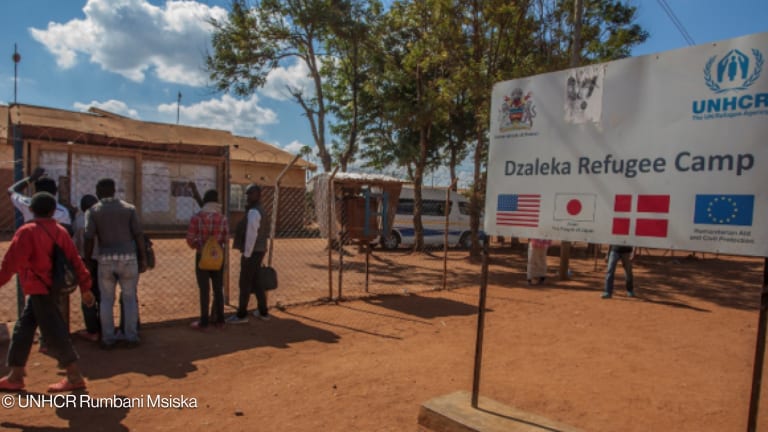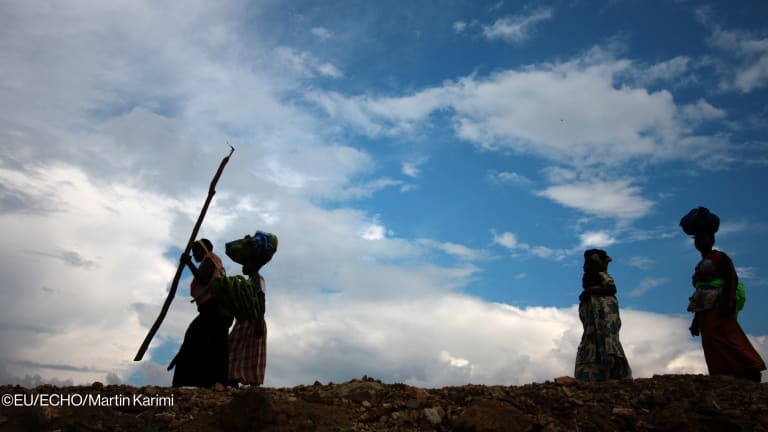More than 50 million displaced in 2013
There are now more people displaced worldwide than there were during World War II, the U.N. High Commissioner for Refugees revealed on World Refugee Day.
There are now more people displaced worldwide than there were during World War II. This is according to a new report the U.N. High Commissioner for Refugees released on World Refugee Day. As of the end of 2013, 51.2 million people have been displaced from their homes, including 16.7 million refugees, more than 33 million internally displaced people and around 1.2 million asylum seekers. The 51.2 million displaced people in 2013 also represent the largest figure on record — or since UNHCR started collecting these statistics in 1989. To emphasize the scale of this displacement, UNHCR noted that if all these people were from just one country, then they would make up the 26th largest in the world. Half of the world’s refugees are children Even more alarming is the fact that children up to 17 years old accounted for more than half of the refugee population — an increase from 46 percent in 2012 and the highest in a decade. The number of refugee children, however, varies across regions. In the Horn of Africa, where data coverage is 95 percent, the proportion of refugee children relative to the total refugee population is 60 percent — the highest worldwide. But in Europe and the Americas, where the lowest numbers of refugee children were recorded, disaggregated age data is particularly limited. Better availability of the age breakdown of the refugee populations from the two regions could still nudge the number of refugee children higher. The rise in the number of refugee children worldwide can be attributed to the increasing number of Syrian, Afghan and Somali children in their refugee populations, in which they comprise half of the numbers. Together, refugees from Syria, Afghanistan and Somalia make up almost a third, or 31 percent, of refugee children around the world. Afghanistan (2.56 million), Syria (2.47 million) and Somalia (1.12 million) also accounted for more than half, or 53 percent, of refugees worldwide. Developing countries host majority of refugees A further illustration of the continued conflict in Syria is the high number of refugees relative to the national populations of both Lebanon and Jordan, the top two countries with the most number of refugees per 1,000 inhabitants in 2013. If the 447,300 Palestinian refugees registered with the U.N. Relief and Works Agency for Palestine Refugees in the Near East are included, then Lebanon is home to one refugee in four inhabitants. According to UNHCR, the last time a country hosted this high a concentration of refugees was in 1980, when the proportion of Ethiopian refugees in Somalia reached 328 per 1,000 inhabitants. Meanwhile, there has been a shift in which countries are hosting refugees. UNHCR noted that in the late 1980s, most of the world’s refugees were living in developing regions. The proportion of refugees living in these countries, however, dropped when those who were forced to flee their homes during the Yugoslav wars mainly went to developed countries, where many of them eventually gained citizenship. While refugees living in developed countries have since decreased, the number of refugees in developing countries continued to rise. By the end of 2013, 10.1 million, or 86 percent, of all refugees live in developing countries — a record high for the past 22 years. Rethinking durable solutions These numbers call for a reassessment of current efforts to deal with displacement. In another report released on World Refugee Day, the Humanitarian Innovation Project from the University of Oxford’s Refugee Studies Center noted that “a rethink is urgently needed” when it comes to refugees. The report — conducted in Uganda, where refugees have the right to work and live in settlements instead of refugee camps — delved into refugees’ economic lives from their perspective and argued that offering ways for refugees to move freely and support themselves was a better alternative to long-term encampment. The researchers added that allowing refugees to be more self-reliant is important because, while so-called durable solutions are ideal, they are often unavailable to refugees for political reasons. There is also a need to close the “relief-to-development gap” and include refugees, who know that humanitarian aid can be unreliable, in development plans, according to the report. While the researchers themselves acknowledge that the research is preliminary and that there remains a need for comparative case studies in different environments as well as other phases and categories of displacement, the report could offer ways to reevaluate whether some solutions are truly durable for the displaced. Join the Devex community and gain access to more in-depth analysis, breaking news and business advice — and a host of other services — on international development, humanitarian aid and global health.
There are now more people displaced worldwide than there were during World War II.
This is according to a new report the U.N. High Commissioner for Refugees released on World Refugee Day. As of the end of 2013, 51.2 million people have been displaced from their homes, including 16.7 million refugees, more than 33 million internally displaced people and around 1.2 million asylum seekers.
The 51.2 million displaced people in 2013 also represent the largest figure on record — or since UNHCR started collecting these statistics in 1989. To emphasize the scale of this displacement, UNHCR noted that if all these people were from just one country, then they would make up the 26th largest in the world.
This story is forDevex Promembers
Unlock this story now with a 15-day free trial of Devex Pro.
With a Devex Pro subscription you'll get access to deeper analysis and exclusive insights from our reporters and analysts.
Start my free trialRequest a group subscription Printing articles to share with others is a breach of our terms and conditions and copyright policy. Please use the sharing options on the left side of the article. Devex Pro members may share up to 10 articles per month using the Pro share tool ( ).
Anna Patricia Valerio is a former Manila-based development analyst who focused on writing innovative, in-the-know content for senior executives in the international development community. Before joining Devex, Patricia wrote and edited business, technology and health stories for BusinessWorld, a Manila-based business newspaper.








